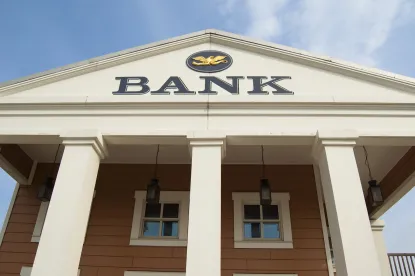On May 13, 2020, the United States Small Business Administration (“SBA”) finally addressed certain Paycheck Protection Program borrowers who missed out on available funds because rule changes on how to calculate maximum loan amounts were announced after such borrowers had submitted applications or had their loans processed. Seasonal employers, as well as partnerships and other self-employed individuals, may be able to increase their loan amounts automatically, depending on whether their bank has already submitted certain lender documentation to the SBA. Affected borrowers should promptly confirm with their lenders whether loan increases are still possible and should consult with counsel about how the new formulae affect their maximum loan amount calculations.
Background
On March 27, 2020, the President signed the Coronavirus Aid, Relief, and Economic Security Act of 2020 (the “CARES Act”) into law. Section 1102 of the CARES Act temporarily permits the SBA to guarantee 100% of loans granted under the Paycheck Protection Program (“PPP”). The PPP is a loan guarantee program, administered by the United States Treasury and SBA, through which financial institutions can make forgivable loans to small business concerns, business concerns with fewer than 500 employees, and certain other eligible borrowers. Section 1106 of the CARES Act provides for forgiveness of up to the full principal amount of qualifying loans guaranteed under the PPP.
On April 14, 2020, SBA posted an interim final rule (the “April 14 IFR”) that, among other things, provided guidance for individuals with self-employment income. This interim final rule stated that partners in partnerships (including members of limited liability companies that elect to be treated as partnerships) should include their individual share of partnership profits reported as self-employment income (up to $100,000) in the applicable partnership’s loan application and should not apply for loans separately as self-employed individuals.
On April 27, 2020, SBA posted an interim final rule (the “April 27 IFR”) that provided alternative criteria for calculating the maximum loan amount for PPP loans issued to seasonal employers, which expanded the time period at which seasonal employers could look in order to (i) calculate average monthly payroll expenses and (ii) determine whether a seasonal employer was operational when applying for a loan under the PPP.
Interim Final Rule on Loan Increases
On May 13, 2020, the SBA posted an Interim Final Rule on Loan Increases (the “IFR on Loan Increases”) that supplements previous guidance for borrowers who are partnerships (and LLCs treated as partnerships) or seasonal employers. This new guidance could result in additional PPP funds being allocated to such borrowers. PPP loans that were previously approved and/or disbursed to partnerships or seasonal employers before the April 14 IFR and April 27 IFR were issued may not have been for the full amount for which the borrowers are eligible under the updated guidance.
The IFR on Loan Increases authorizes PPP lenders to increase existing PPP loans to partnerships or seasonal employers to include amounts to cover partner compensation in accordance with the April 14 IFR, or to permit seasonal employers to calculate their maximum loan amount using the timeframes outlined in the April 27 IFR. However, if (i) a lender has already submitted the SBA Form 1502 report on a PPP loan, or (ii) the deadline by which a lender was required to submit SBA Form 1502 on a particular loan has passed[1], that loan may not be increased under the IFR on Loan Increases. We recommend discussing the status of SBA Form 1502 with respect to your loan with your lender before considering whether to attempt to increase your loan amount and to determine how much time remains, if any, for you to do so.
In order to apply for a loan increase, borrowers must provide their lenders with the required documentation to support the calculation of the increase. In no event can the increased loan amount exceed the maximum loan amount allowed under the PPP, which is $10 million for an individual borrower or $20 million for a corporate group.
Additionally, although the interim final rule on disbursements requires that lenders disburse PPP loans in a single disbursement, the IFR on Loan Increases authorizes lenders to make an additional disbursement of the increased loan proceeds for PPP loans that are increased pursuant to the IFR on Loan Increases but which have already been disbursed. Lenders should make any such additional disbursements prior to their submission of SBA Form 1502.
[1] SBA Form 1502 is a form on which PPP lenders report on PPP loans and collect processing fees on fully-disbursed loans. Lenders must electronically upload SBA Form 1502 within twenty calendar days after a PPP loan is approved or, for loans approved before availability of the updated SBA Form 1502, by May 22, 2020.






 />i
/>i

